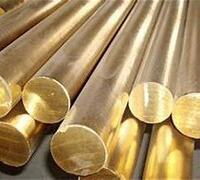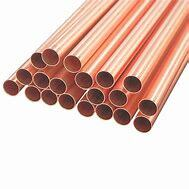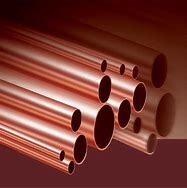1. Introduction
Just 24 hours ago, a major data center in Texas reported a near-miss power surge incident that was safely diverted thanks to its robust copper-based earthing system. The facility’s engineers credited their copper earth rods for preventing catastrophic downtime—a reminder of how critical grounding infrastructure is in our hyper-connected world.

While copper rods are often associated with basic electrical work or plumbing, their role in high-stiability earthing systems is a sophisticated, niche application that demands precision, material science, and engineering insight. In this article, we’ll dive into why copper rod—specifically copper earth rod, copper bonded ground rod, and related variants—is indispensable in modern grounding solutions.
2. The Science Behind Copper Rods in Earthing
Earthing (or grounding) ensures that excess electrical current—whether from lightning strikes, short circuits, or static discharge—is safely directed into the earth. For this to work reliably over decades, the grounding electrode must resist corrosion, maintain low resistance, and handle high fault currents.
Pure copper rods offer exceptional conductivity and corrosion resistance, but they’re expensive and mechanically soft. That’s where engineered alternatives like copper bonded steel and copper clad steel ground rods come in. These combine the conductivity of copper with the tensile strength of steel, making them ideal for deep-driven installations in rocky or compacted soils.
- Copper bonded earthing rod: Steel core with a thick electrolytic copper coating (typically 0.25mm+).
- Copper clad steel earth rod: Similar, but uses a metallurgical bond for even better durability.
- Solid copper rod: Used in highly corrosive environments like coastal or chemical plants.
3. Real-World Applications Beyond Basic Grounding
In utility-scale solar farms, copper earth rods are buried in arrays to protect inverters and transformers from lightning-induced surges. The same goes for wind turbines, where grounding must extend deep into the foundation.

Data centers use copper strip for earthing grids beneath raised floors, connecting to copper earth rods driven into the subsoil. This hybrid approach—combining flat copper strip with vertical copper rods—ensures ultra-low impedance paths for fault currents.
Industrial facilities handling flammable materials (like refineries) rely on copper bonded ground rods to prevent static sparks. Here, even minor resistance fluctuations can be dangerous, so material consistency is non-negotiable.
4. Cost vs. Performance: Understanding Pricing
When sourcing materials, buyers often compare earthing rod price across options. Solid copper rod commands a premium—copper rod price can be 3–5x higher than copper bonded alternatives. However, in aggressive soils (high salinity, acidity), solid copper may last 40+ years, while bonded rods might degrade in 15–20.
For most commercial applications, copper bonded steel offers the best balance. A standard 5/8″ x 8ft copper bonded earthing rod costs roughly $25–$40, depending on copper thickness and regional availability. Always verify compliance with IEEE 80 and IEC 62561 standards.
5. Installation Best Practices

Driving a ground rod copper into hard soil requires hydraulic drivers—not hammers—to avoid damaging the copper layer. For copper to copper welding rod or exothermic welding, clean surfaces are essential to ensure a molecular bond.
Never use standard welding rod copper for joining earthing components—always opt for copper to copper brazing rods or specialized exothermic welds. Mechanical clamps may loosen over time, increasing resistance.
In tight urban sites, engineers sometimes use copper strip instead of rods. A copper earth strip 25x3mm price typically ranges from $8–$12 per meter, and it’s easier to route around obstacles. Flat copper strip also integrates well with copper bus bar systems in switchgear rooms.
6. Common Mistakes to Avoid
One frequent error is mixing materials—like connecting a copper earth rod to a galvanized steel pipe. This creates galvanic corrosion, drastically shortening system life.
Another is improper stripping or handling of copper strip wire. While stripping copper wire for scrap might involve burning (a hazardous and illegal practice in many areas), earthing installations require clean, oxide-free surfaces. Use the best way to strip copper wire: precision wire strippers or thermal strippers—not open flames.
Also, don’t confuse copper strip with copper tape for snails (a gardening product!) or copper roof strip. Electrical-grade flat copper strip must meet ASTM B187 or IEC 60417 standards for conductivity and purity.
7. Conclusion
From data centers to solar farms, the humble copper rod—whether solid, bonded, or clad—plays a silent but mission-critical role in electrical safety. Choosing the right type (copper earth rod vs. copper bonded ground rod), installing it correctly, and understanding copper rod price versus lifecycle value are key to building resilient infrastructure. As renewable energy and digital infrastructure expand, demand for high-performance copper grounding solutions will only grow.
Our Website founded on October 17, 2012, is a high-tech enterprise committed to the research and development, production, processing, sales and technical services of ceramic relative materials such as Why. Our products includes but not limited to Boron Carbide Ceramic Products, Boron Nitride Ceramic Products, Silicon Carbide Ceramic Products, Silicon Nitride Ceramic Products, Zirconium Dioxide Ceramic Products, etc. If you are interested, please feel free to contact us.

